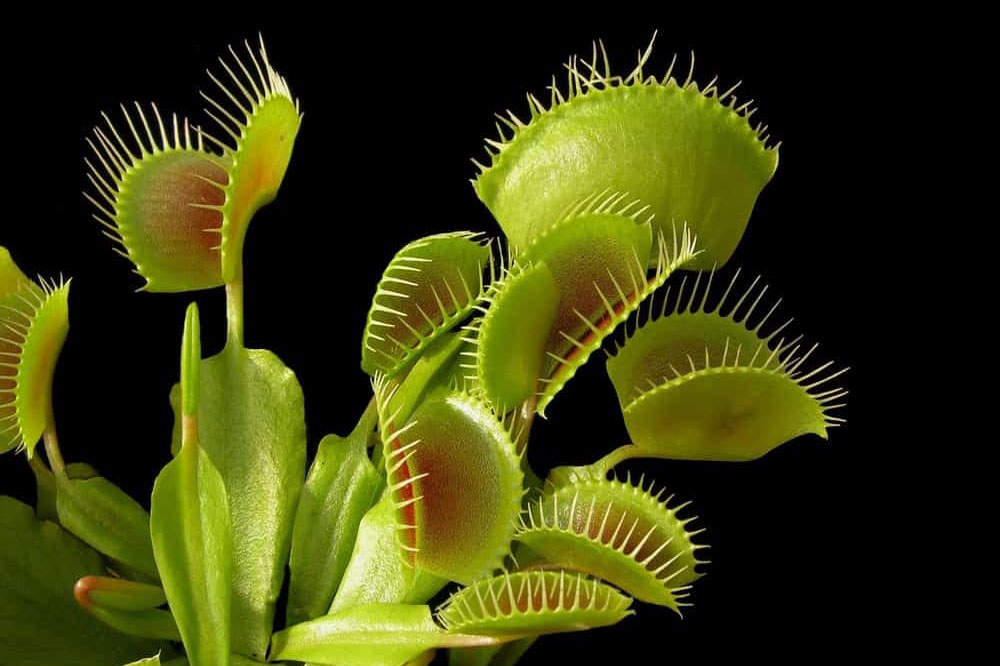
Below are a few of the most common carnivorous plants that would make a great houseplant, especially if you want a natural predator for all those pesky fungus gnats that seem to love our other houseplants so much!
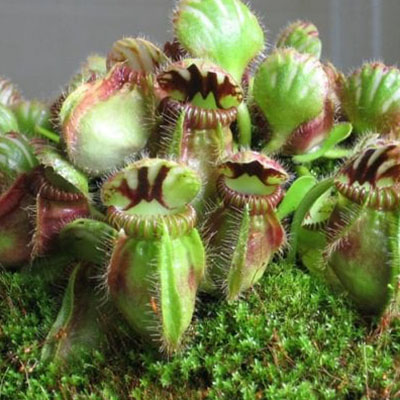
Cephalotus follicularis
Also known as the fly-catcher, the pitcher plant’s carnivorous leaves have small green pitchers, protected by a red-white hairy lid. The opening door of the pitcher holds red rings that produce nectar and lure prey. Inside are two glands that form a digestive enzyme fluid which breaks down the flesh of insects.
Growing Tips:
1. It prefers warm temperatures, moist soil, and partial sun.
2. You can keep this carnivorous plant with other ones in an aquarium to provide warmth and humidity.
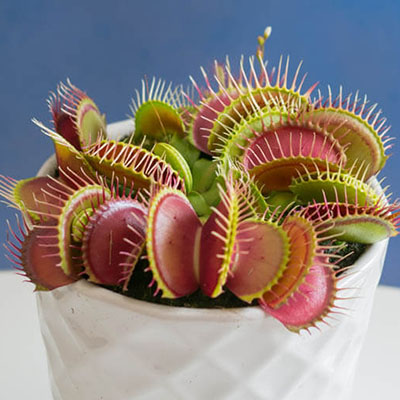
Dionaea muscipula
Venus flytrap is one of the most popular indoor carnivorous plants. With its unique insect-catching toothed leaves, it looks so cool and mysterious that you’d love having it in your home. It primarily eats ants and flies, but you can feed it other insects as well.
Growing Tips:
1. Feeding a couple of smaller insects in a month is enough for a young plant.
2. Keep the soil damp all year round using stored rainwater, or reverse osmosis or deionized water.
3. Place the plant near a window that receives filtered sunlight.
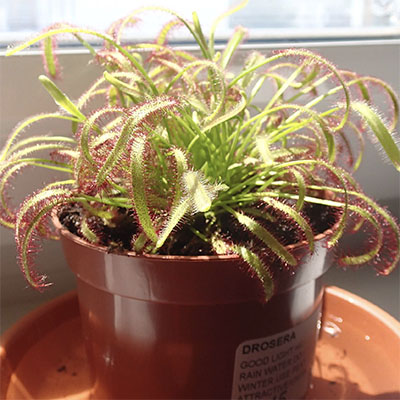
Drosera
Sundew plant, as its name suggests, has hairy stems, adorned in drops of sticky substance that looks like morning dew. These drops are digestive enzymes that entice and dissolve their prey.
Growing Tips:
1. Sundews require a warm temperature that must be above 50 F (10 C).
2. Moist soil and humid surroundings are also two important growing conditions.
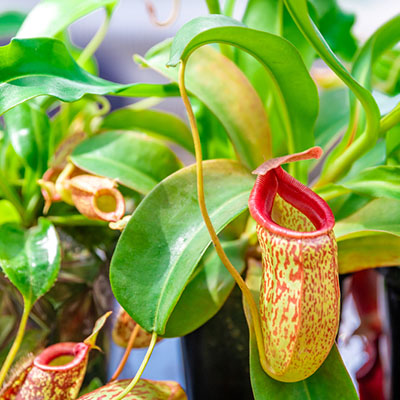
Nepenthes
Also known as the tropical pitcher plant, it looks perfect in hanging baskets due to its cup-shaped dangling pockets that hang from its tendrils. This plant uses these dangling pockets to catch and dissolve the insects for nutrition.
Growing Tips:
1. Place the plant in bright indirect sunlight, somewhere it can receive the morning sunlight.
2. Prepare a potting mix from 3 parts of sphagnum moss, and 1 part of pumice, perlite, or lava rock.

Pinguicula
Butterworts are commonly available online and in garden centers. They stand out with their tiny appearance with their colorful flowers. Further, it attracts insects like flies through its sticky resin on the leaves, trapping and digesting the prey.
Growing Tips:
1. It prefers evenly moist soil and does well in temperatures ranging between 75-100 F (24-38 C) in summers and 45-75 F (7-24 C) in winters.
2. Avoid using any type of fertilizer at all, as it will kill the plant.
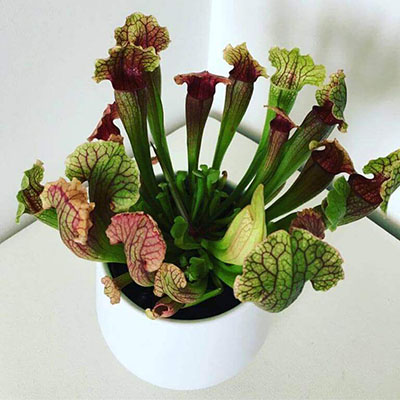
Sarracenia
The pitcher plant comes in different shades of purple, yellow, and pink, which makes it an attractive carnivorous houseplant. The plant’s leaves have an upward tabular trap with a cavity filled with digestive liquid (nectar) that lures the prey.
Growing Tips:
1. It thrives well in bright indirect light.
2. A potting mix of two parts of peat moss and one part of sand or perlite is ideal for growing a pitcher plant.